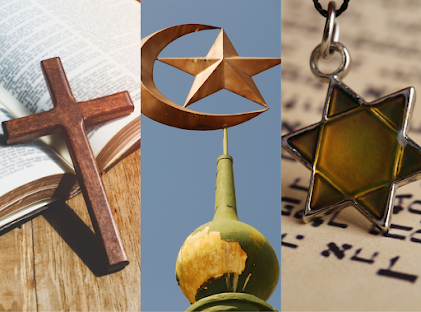Exploring the Depths of Faith: Insights into Religion and Spirituality
The Sacred Inquiry looks at belief and spiritual practice with care and honesty. Expect well-researched conversations and clear, thoughtful takes that spark curiosity and sharp thinking—whether you’re new to this, deep into study, or just curious about faith’s big questions.


Symbols shape what we believe, how we act, and who we think we are. Religious symbols carry special weight, often packing big ideas into simple shapes. But what happens when a respected symbol has roots or ties that feel at odds with what people believe today? Let’s take a closer look at three well-known signs, the cross, the crescent and star, and the Star of David, and ask what they really say now.
The Cross: From Execution Tool to Sign of Hope
The cross is among the most recognized symbols on earth, standing for Christianity and the belief in Jesus Christ’s crucifixion and resurrection. Yet the cross began as a device for execution in the Roman Empire, a painful death reserved for the worst offenders. How did something so grim become a sign of salvation?
Emperor Constantine reported seeing a vision of the cross before a key battle in 312 AD, and his victory helped lift the symbol into public life. Over time it eclipsed earlier Christian signs like the ichthys, a simple fish mark that pointed to Christ as “the fisher of men.” The shift says a lot about the faith’s message, finding hope through suffering and meaning through loss. The tension remains, though, because believers still reckon with its origin as an instrument of death.
The Crescent and Star: Roots Outside Islamic Doctrine
People often assume the crescent and star are the official badge of Islam. They are not. These images predate Islam by centuries and appeared in older cultures tied to the heavens. They were common across the Byzantine world and, after 1453, the Ottomans adopted the crescent for Constantinople, now Istanbul.
Despite today’s broad association, Islamic sources do not mandate such symbols. The Quran and the Sunnah, Islam’s primary references, do not endorse icon use and stress avoiding anything that could pull attention away from God. That raises a live question for many readers, how did images with pre-Islamic origins come to stand, in practice, for a faith that is cautious about icons?
The Star of David: From Amulet to Identity
The Star of David, or Magen David, is now widely linked to Judaism. Its path to that role is neither simple nor sourced in ancient Jewish scripture. Early uses of the six-pointed figure show up in Jewish magical practices around the sixth century and are tied by legend to Solomon’s Seal, a mark of protection and power rather than a formal religious emblem.
In the nineteenth century, with the rise of Zionism, the symbol gained new status as a clear sign of Jewish identity. Theodor Herzl and other leaders leaned on its familiarity and broad recognition. A figure once tied to amulets and talismans became the public face of a people and, later, a nation.
Symbols Beyond Their Beginnings
Symbols are not fixed. Meanings shift. Communities change what a mark stands for as times and needs change. A sign can carry hope, identity, and even disagreement, depending on who uses it and why. The force of a symbol lives in the stories people attach to it, not only in where it started.
So when you see a cross, a crescent, or a star, ask not just what it means, but why it means that now. Are these signs still bound to their origins, or have they been rebuilt by the people who carry them today?
What do these symbols say to you?
The Sacred Inquiry
Exploring faith, belief systems, and spiritual traditions.
Contact us
Stay curious. stay informed
inquiry@thesacredinquiry.com
© 2025. All rights reserved.
